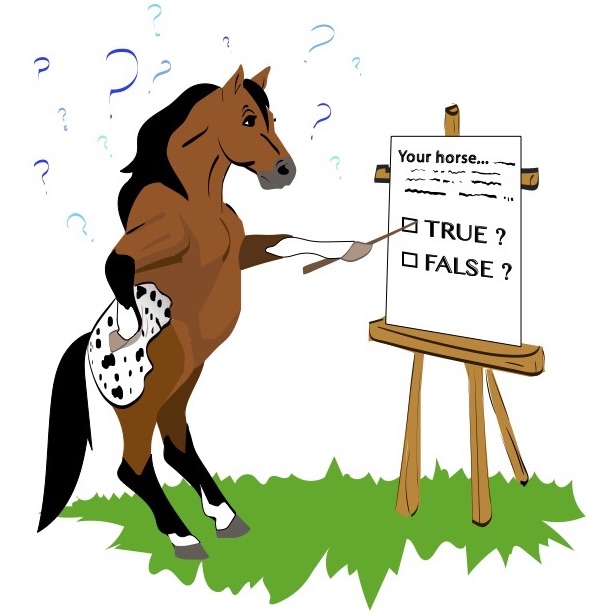
1. When turning your horse out for exercise or returning him to his pasture, you should always…
A) give him a light smack on the hind end to encourage him to get going and enjoy his exercise.
B) leave his halter on for your convenience when you go to catch him the next time you ride.
C) turn his head back toward the gate then step through it yourself before slipping his halter off.
2. True or false: For leading and tying, concrete can be a safe surface for horses.
T / F
3. Why should you avoid urgency when training your horse?
A) It can cause your horse to forget his earlier lessons.
B) It can prompt you to cut corners, which is a safety hazard.
C) Actually, urgency is good—it helps you stay consistently focused.
4. True or false: Horses have a blind spot directly adjacent to each shoulder, so you must take extra care when working in or near the shoulder area.
T / F
HOW’D YOU DO? (Answers below.)
1. C is correct. Turning your horse to face you and stepping back through the gate before letting him go makes sure you avoid his heels in case he kicks them up in delight at freedom. (And of course you wouldn’t leave a non-breakable halter on your turned-out horse because he might get it caught on something and panic. Find 13 more safety-first riding and handling rules.)
2. T is correct. Concrete can be safe, but only if certain circumstances apply—for example, the concrete is dry and has a roughed surface for traction. Never tie a shod horse on smooth concrete, however, especially if it’s wet. (Find more true/false brainteasers about horse safety.)
3. B is correct. Urgency can prompt you to cut corners and hurry, both of which are safety hazards. Take the time it takes to prepare your horse for any new endeavor. Give him a chance to absorb learning and respond calmly. Never try to force him into anything. (Find six additional must-know horse-safety principles.)
4. F is correct. Horses’ blind spots are directly in front of and directly behind them. That’s where you should always take extra care to make sure your horse knows you’re there and knows it’s you. (And here’s a short video on how best to avoid your horse’s kick zone.)
Hey! Not already receiving H&R’s fun and informative newsletter? Sign up for The Ride.






